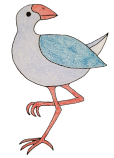I’ve spent a large amount of time working in anechoic chambers, and possibly even longer analysing the data I’ve collected in them. There is something very peaceful about working in a nice quite air-conditioned room with just the background hum of some radio frequency equipment. It almost offsets the problem of the grey colour your hands turn from the carbon in the radar absorbing material. Over the years I was often asked what the anechoic chamber was and why it was used, so here is a quick introduction to all things anechoic chamber.
CHOOSE YOUR RADOME WISELY
The word radome is a portmanteau of the words radar and domes, they are designed to cover an antenna and protect it from the elements. Growing up near the golf balls in the North York Moors I have known about radomes for a long time, and always found them fascinating. I was really happy that one of the first jobs I had when I started in engineering was to ‘just look after’ the design and manufacture of a new radome. It was supposed to be just a part time occupation for a few weeks. However, it turned into a full-time job of several years to get a good radome design that could be repeatably manufactured and worked well with my antenna. In this blog I am going to look at different types of radome shape, material and thickness.
WHY YOU SHOULD JOIN YOUR PROFESSIONAL BODY
I am very pleased to say that last week I was awarded fellowship of the Institute of Physics (IOP). This is something I have worked towards since finishing my first degree and I am very proud to be able to say that I am now a fellow of the IOP.
Fellowship is the highest grade of membership in the IOP, if you want to know more about fellowship of the IOP: https://www.iop.org/membership/join/fellow/page_51405.html
I have been a member of 4 different professional bodies over my career, joining and leaving as my job has altered. The one staple in the last 20 something years has been the IOP. I joined the IOP during the first week of my physics degree, to be fully honest I didn't realise exactly what they did at that point, but they offered me a monthly physics magazine, the best paper diary I have ever used and all for £16 for a 4 year membership. Bargain. Yes, this was back in the 90's when paper diaries were a thing and no, they haven't sent them out for years. However, I was very glad that I decided to join as the benefits are far wider ranging than I could have imagined.
I am going to discuss a few benefits of belonging to your professional body and some specific examples where I have benefited.
OSPREYS, RED SQUIRRELS AND SPOTTING SCOPES
Over the glorious Easter bank holiday weekend we had this year I went to visit the Loch of the Lowes and its rare inhabitants. The Loch of the Lowes is in Perthshire, Scotland and is run by the Scottish Wildlife Trust, they have created a haven for some rare wildlife. I got to see some red squirrels, ospreys and viking spotting scopes.
THE MORE FEEDHORNS THE BETTER
Feed horns have always held a fascination for me, just make a bit of shaped metal and you can control electromagnetic radiation. In my opinion, a great super power to have! However, when you put several feed horns together you can create something even more powerful and informative.
A feed horn is a type of horn antenna, which means it is formed by flaring the sides of metal waveguide into a horn like shape thus creating a controlled beam of radio waves. A monopulse system is one that sends out multiple overlapping beams at the same time. Typically, a monopulse antenna is an antenna array which is symmetrical about boresight.
RADIO PRISON ON THE AIR!
I recently went to Cork on holiday, and one of the many great places I visited was Cork City Goal. The Goal was a stunning building originally opened in 1824 as part of a wave of new prisons which considered things like hygiene and moral improvement to be important for prisoner reform. The building has been beautifully restored, and the museum has a great self-guided tour you can do. However, the main attraction for me turned out to be nothing about incarceration and all about radio waves.
I had got nearly to the end of the self-guided tour and was heading into the gift shop (which unusually was not at the end of the tour), when I overheard one of the guides say:
‘I’m going to switch Marconi on’
LET’S TALK ABOUT REFLECTOR ANTENNAS
I like all antennas, but if I had to pick a special favorite it would definitely be the reflector antenna. I think it is so amazing how they can just move the radio frequency waves (RF) around in space using a shaped lump of metal and manipulate it into something useful. They are also the antennas I have spent the most amount of time designing, getting manufactured, testing and interpreting the results of. However, they are probably not the first antenna that comes to mind for most people, so read on and learn more about them.
A BREAKFAST OF CHAMPIONS
I recently attended my first Institute of Physics business accelerator breakfast meeting. The focus of this particular meeting was social media and how to use it for your business. Having started my own business this year I thought it would be a good idea to go along and see how I could better use social media. It was also a great opportunity to get some continued learning in, which can be very difficult to do when you work in a highly specialised area.





